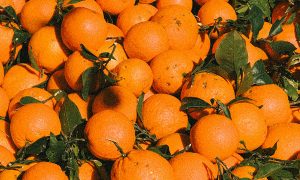
We love the seasons in this country, don’t we? The winter snow, the spring showers, the summer showers and the autumn showers. It’s this variety that keeps us fresh and interesting.
But not many things are seasonal these days. Take this article, for instance: if it was truly seasonal I’d be writing it in January, for that is when the Seville oranges (Citrus aurantium) that you need to make marmalade come on stream. It’s a very short season – the Creme Egg season is longer – and by the middle of February they’re gone and you realise you’ve missed your chance to make marmalade again.
So why am I writing about Marmalade in May? Because, thanks to an unlikely Scotswoman named Janet Keiller, every day is a marmalade day. Sumptuous, sticky, zingy and golden, marmalade is the essence of the summer we’re all dreaming of.
Keiller’s of Dundee is credited with being the first commercial marmalade brand in Britain (and, therefore, the world). Janet’s son James gets his name all over the credits because it was the 18th century and he was a man, but it was Janet’s recipe that turned this occasional condiment into the titan of toast.
Jam making was the Keiller family business and a popular one in Scotland, where the preserving of summer fruits is essential for getting through the long winters, which start at the beginning of September and run through to the end of August. How a firm in Dundee should find its fortune in an exotic fruit from southern Spain, however, is quite bizarre. Even the Spanish don’t use Seville oranges for much, other than treading on and probably lobbing at farm animals on religious feast days.
You can buy a brand of Spanish Seville orange ‘marmalade’, but it’s not the marmalade that you’d be expecting. It’s more akin to the original pasty preserve that gave marmalade its name – contrary to a popular myth that it comes from ‘Marie est malade’, following the administering of an orange-based seasickness remedy to Mary Queen of Scots during a particularly queasy crossing to France. The original ‘marmelada’ was made from quinces by the Portuguese. Their word for quince is ‘marmelo’, and they discovered that if you boiled the pulp of a quince it would set into a jelly, due to the high level of pectin.
Seville oranges also have a high level of pectin in their seeds, which is why they’re essential for making marmalade. Without the pectin you would need more sugar to make it set, and that would take away its tang. Nobody wants their tang taken away.
How Janet Keiller got hold of her Sevilles is not known. She must have just had her wits about her in January. Whatever, she played with an old recipe, possibly from Mary Kettilby’s posthumous A Collection of Above Three Hundred Receipts in Cookery, Physick and Surgery; For the Use of all Good Wives, Tender Mothers, and Careful Nurses, from 1714, until she achieved the perfect consistency of jelly and orangey bits for spreading on toast.
Kettilby’s cookbook, as well as having one of the longest titles in the history of publishing, contains the first printed recipe for Orange Marmalade. But it was the Keillers of Dundee who perfected the proportions, made it popular and instigated the tradition of eating marmalade on toast for breakfast. It’s hard to imagine a world before that.
Last month, Stephen Snead from Worcestershire won double gold at the prestigious Dalemain World Marmalade Awards in Cumbria. From an international field of thousands, the judges awarded joint top prize to Stephen’s Seville orange and lime marmalade with red chilli and his lime and crème de cacao. If you want to try them you can pop along to Fortnum & Mason, but I’m kind of hoping Fortnum & Mason save me the trip to Fortnum & Mason.
Interesting footnote 1: Patti LaBelle, who sang the original Lady Marmalade, turns 80 next Friday. Happy Birthday, Patti.
Interesting footnote 2: Marmalade maestra Janet Keiller was the great-great-great-great-grandmother of TV gardening heart-throb Monty Don.


